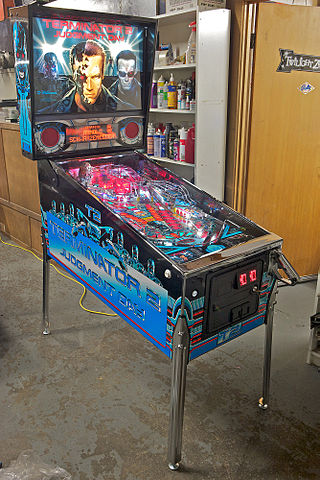
Pinball games are a family of games in which a ball is propelled into a specially designed table where it bounces off various obstacles, scoring points either en route or when it comes to rest. Historically the board was studded with nails called 'pins' and had hollows or pockets which scored points if the ball came to rest in them. Today, pinball is most commonly an arcade game in which the ball is fired into a specially designed cabinet known as a pinball machine, hitting various lights, bumpers, ramps, and other targets depending on its design. The game's object is generally to score as many points as possible by hitting these targets and making various shots with flippers before the ball is lost. Most pinball machines use one ball per turn, and the game ends when the ball(s) from the last turn are lost. The biggest pinball machine manufacturers historically include Bally Manufacturing, Gottlieb, Williams Electronics and Stern Pinball.

WMS Industries, Inc. was an American electronic gaming and amusement manufacturer in Enterprise, Nevada. It was merged into Scientific Games in 2016. WMS's predecessor was the Williams Manufacturing Company, founded in 1943 by Harry E. Williams. However, the company that became WMS Industries was formally founded in 1974 as Williams Electronics, Inc.
Mirco Games was a pinball and arcade game manufacturer from Phoenix, Arizona that existed from 1969 to 1978. They were originally called Arizona Automation from 1969 to 1973 and then changed their name to Mirco in 1974. They created the first microprocessor-based pinball table, The Spirit of '76 in 1975. They also copyrighted the name "Champion Soccer" They first imported then from Germany, then in 1971 they started manufacturing their own.
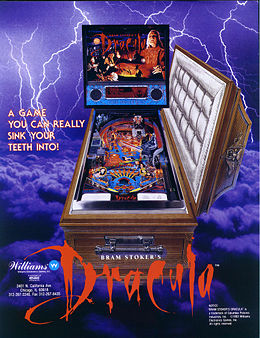
Bram Stoker's Dracula is a 1993 pinball machine released by Williams. It is based on the 1992 film of the same name.

Checkpoint is a 1991 pinball machine released by Data East. It featured the first dot matrix display (DMD) ever incorporated into a pinball game. For Checkpoint, Data East used a "half-height" DMD. By way of comparison, Williams later produced machines with standard DMDs that were twice the height. Checkpoint also features video mode minigames on its display.
The Williams Pinball Controller (WPC) is an arcade system board platform used for several pinball games designed by Williams and Midway between 1990 and early 1999. It is the successor to their earlier System 11 hardware. It was succeeded by Williams/Midway's Pinball 2000 platform, before Williams left the pinball business in October 1999.

Kiss-themed pinball machines were produced by Bally in 1979 and Stern in 2015. There are also some pinball machine conversion kits, a Kiss pinball machine prototype and a Kiss pinball video game.

George Gomez is an industrial designer, video game designer, and pinball designer who has worked for Bally, Williams, and Stern Pinball, among other companies. He worked on the team that created the Tron video game, and headed the team that created Spy Hunter. In 1984 after the 1983 video game crash, he left Midway to invent toys at the consulting firm Marvin Glass & Associates.

The Party Zone is a crossover solid-state pinball machine released in 1991 by Midway designed by Dennis Nordman and programmed by Jim Strompolis. It is in a single playfield format and collaborates characters from previous pinball machines. It is the second pinball machine released after the Bally-Midway division was sold, yet still operated under the "Bally" name.

Spirit of 76 is a pinball game designed by Ed Krynski and Wayne Neyens and released in 1975 by Gottlieb. The pinball machine should not be confused with the pinball machine The Spirit of '76 by Mirco Games, Inc.
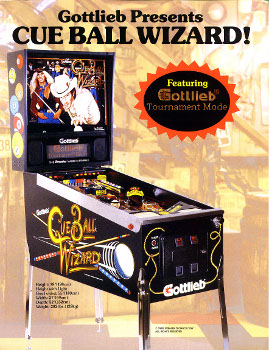
Cue Ball Wizard is a pinball machine designed by Jon Norris and released in December 18 1992 by Gottlieb. It features a cue sports theme and was advertised with the slogan "Gottlieb Presents CUE BALL WIZARD!".

El Dorado City of Gold is a pinball machine designed by Ed Krynski and released in 1984 by Gottlieb. The game features an El Dorado adventure theme.

Lights...Camera...Action! is a pinball machine designed by Jon Norris and released by Gottlieb in 1989. The game features a movie making show business theme.
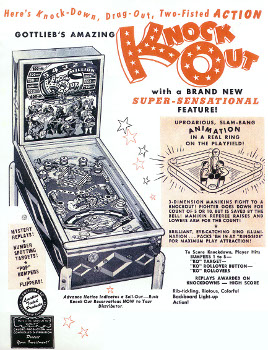
Knock Out is a pinball machine designed by Harry Mabs and released by Gottlieb in March 19 1950. The game was marketed with the slogan: "Uproarious Slam-Bang Animation in a Real Ring on the Playfield". It should not be confused with Knockout by Bally from 1974.

Play-Boy is a pinball machine released by Gottlieb in 1932. The game features a card gambling theme. It should not be confused with several other pinball machines with the name Playboy as from Rally Play Company, Bally, Data East and Stern.

Lost World is a pinball machine released by Bally in 1977. The game features a fantasy theme. It should not to be confused with the pinball machine Escape from the Lost World from 1987.

Eight Ball Deluxe is a pinball machine designed by George Christian and released by Bally in 1981. The game features a cue sports theme and was so popular that it was produced again in 1984.
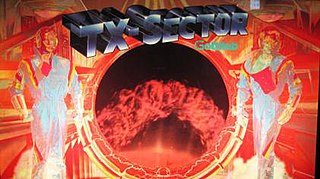
TX-Sector is a pinball machine designed by John Trudeau and released by Gottlieb in 1988. The game features a scifi theme and revolves around raising the energy level to teleport the ball.
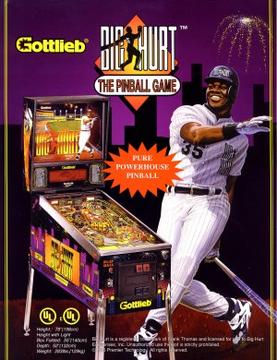
Frank Thomas' Big Hurt is a pinball machine designed by Bill Parker and released by Gottlieb in 1995. The game features a baseball theme and is named after Frank Thomas.
Lyman F. Sheats Jr was an American pinball champion, game designer and coin-operated game operating system software engineer who had worked for Bally, Williams, and Stern Pinball, among other companies.

















